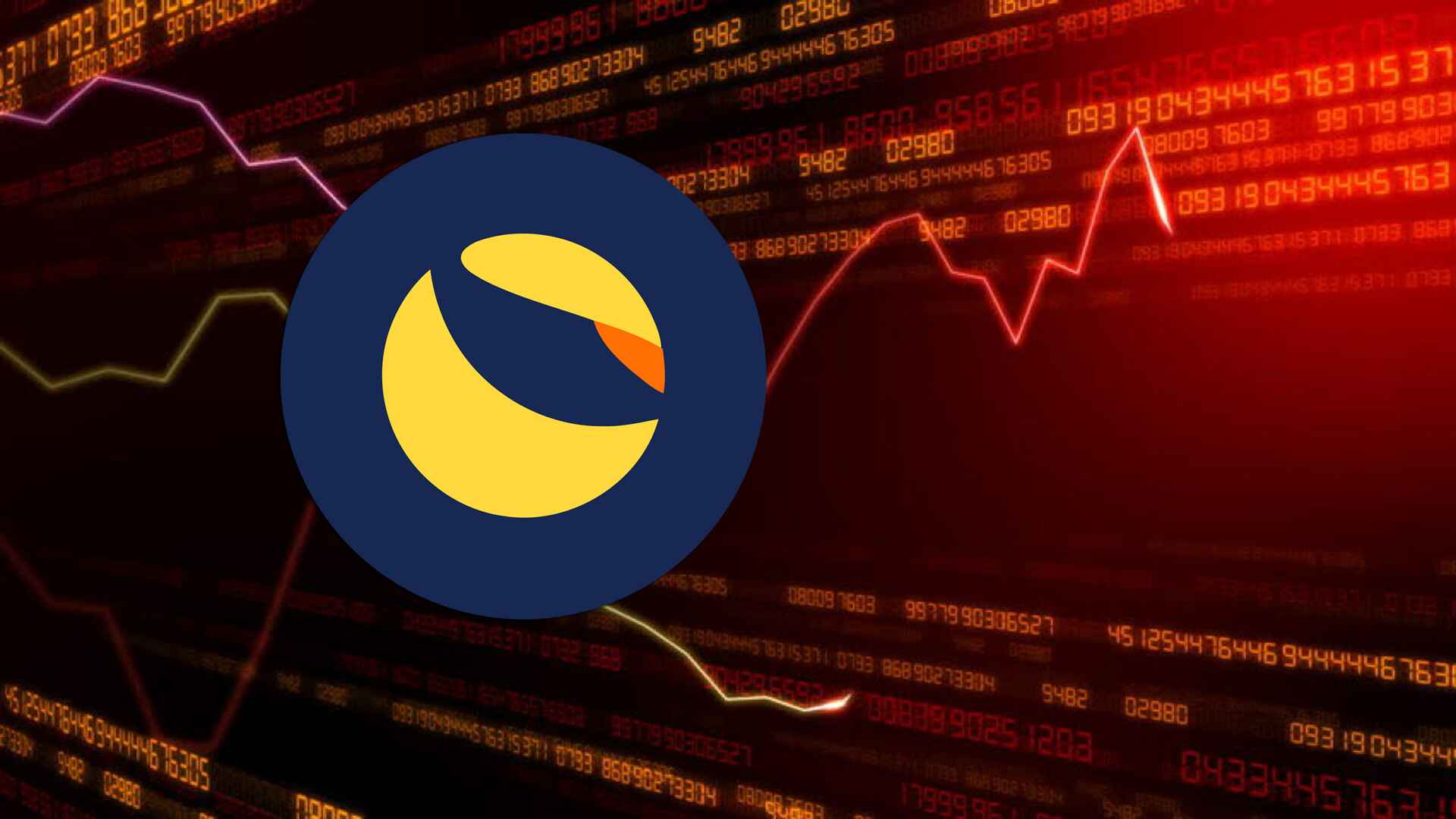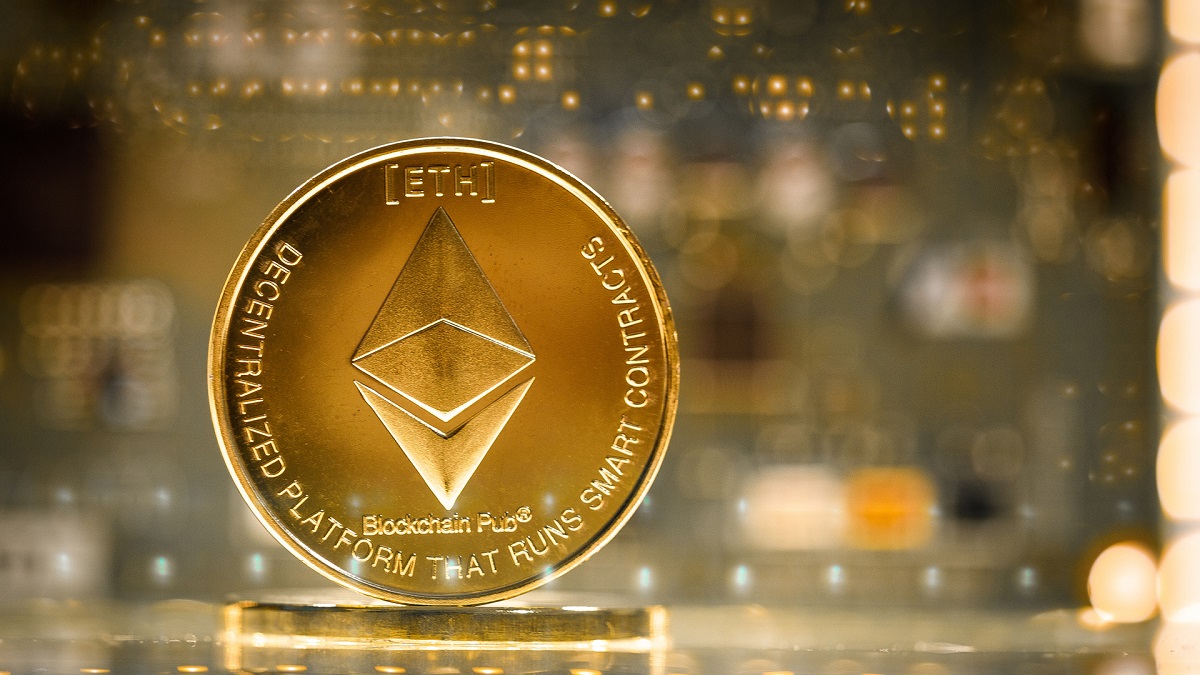What is Blockchain?
Blockchain is a revolutionary technology that has gained significant attention in recent years. At its core, a blockchain is a decentralized and distributed ledger that records transactions across multiple computers in a transparent and secure manner. Unlike traditional centralized databases, where a single entity controls the data, blockchain relies on a network of nodes that participate in the verification and validation of transactions.
The key feature of blockchain technology is its ability to provide immutability and transparency through cryptographic algorithms. Each transaction or piece of data is verified by multiple nodes in the network, ensuring that the information entered into the blockchain is legitimate and cannot be altered or tampered with without the consensus of the network participants.
This technology was first introduced in 2008 by an anonymous person or group of people under the pseudonym “Satoshi Nakamoto,” who also created Bitcoin, the first cryptocurrency built on blockchain technology. However, blockchain has evolved far beyond its initial application in cryptocurrencies. Today, it is being adopted across various industries, including finance, supply chain, healthcare, and more.
Blockchain provides several advantages over traditional systems. Firstly, it eliminates the need for intermediaries by allowing direct transactions between participants, reducing costs and improving efficiency. Additionally, it enhances security by utilizing cryptographic techniques that make it incredibly difficult for hackers to tamper with the data. Moreover, blockchain enables trust and transparency, as all participants have access to the same information and can verify transactions independently.
As blockchain continues to develop, different blockchain platforms and protocols have emerged, each with its own unique features and use cases. These platforms provide the foundation for building decentralized applications (dApps) and smart contracts that can revolutionize various industries.
In the next sections, we will explore how the Terra platform leverages blockchain technology and the specific blockchains it utilizes to achieve its goals.
The Basics of Terra
Terra is a blockchain-based platform that aims to create a stable and scalable digital currency system. Founded by Do Kwon and Daniel Shin, Terra’s primary objective is to build a decentralized financial infrastructure to enable seamless and affordable global payments.
At the heart of Terra’s ecosystem is its stablecoin, also known as TerraUSD (UST). Unlike traditional cryptocurrencies such as Bitcoin or Ethereum, which are highly volatile, stablecoins like UST are designed to maintain a stable value, usually pegged to a fiat currency like the US dollar. This stability makes stablecoins ideal for everyday transactions and store of value.
Terra achieves stability by utilizing an innovative algorithm called the “minting and burning” process. When demand for UST increases, new UST tokens are minted. Conversely, when demand decreases, excess UST tokens are burned, effectively managing the supply and demand dynamics to stabilize the value of the stablecoin.
As a platform, Terra aims to facilitate the adoption of stablecoins by providing a straightforward and reliable infrastructure for payment solutions. Users can transact with UST through various avenues, including Terra’s own decentralized applications (dApps), partner merchants, and even third-party wallets. This widespread acceptance of UST fosters seamless cross-border payments and financial inclusion.
Terra’s blockchain architecture is built on a series of protocols that enable its functionality and scalability. The primary infrastructure layer is comprised of Tendermint, a Byzantine Fault-Tolerant (BFT) consensus algorithm. Tendermint ensures that all transactions on the Terra network are validated and agreed upon by the network participants, maintaining the security and integrity of the platform.
Another critical component of Terra’s ecosystem is its integration with stablecoin issuers and partner organizations. By establishing strategic partnerships with these entities, Terra is able to create an expansive network of stablecoins that are pegged to different fiat currencies. This multi-currency approach allows Terra to provide global users with access to stablecoins that are relevant to their local currencies, fostering financial inclusivity and eliminating the need for costly currency conversions.
Furthermore, Terra operates on a Proof-of-Stake (PoS) consensus mechanism, which incentivizes network participants to hold and stake Terra’s native cryptocurrency, Luna. By staking Luna tokens, users can earn rewards and actively participate in securing the network, enhancing its overall stability and security.
Overall, Terra’s ecosystem is designed to revolutionize the way people transact and engage with digital currencies. By providing a stablecoin infrastructure that is scalable, accessible, and community-driven, Terra is well-positioned to reshape the future of decentralized finance and global payments.
Why Blockchain is Important for Terra
Blockchain technology plays a crucial role in the success and functionality of Terra. By leveraging the unique properties of blockchain, Terra is able to provide a secure, transparent, and decentralized financial infrastructure that is essential for its operations. Here are some key reasons why blockchain is important for Terra:
1. Decentralization: Blockchain allows Terra to operate in a decentralized manner, removing the need for intermediaries and central authorities. This decentralized nature ensures that transactions on the Terra network are not controlled by a single entity and are transparently recorded on the blockchain for all participants to view.
2. Security: Blockchain provides robust security measures, ensuring the integrity and immutability of the transactions. By utilizing cryptographic techniques and consensus algorithms, Terra eliminates the risk of fraud, manipulation, and unauthorized access.
3. Transparency: The transparency of blockchain technology is a significant advantage for Terra. All transactions conducted on the Terra network are recorded on the blockchain, enabling anyone to view and verify the transaction history. This transparency builds trust among users and ensures accountability.
4. Global Accessibility: Through blockchain, Terra has the ability to offer its services to a global audience. The decentralized nature of blockchain eliminates geographical barriers, allowing users from different parts of the world to participate in the Terra ecosystem and make cross-border transactions seamlessly.
5. Smart Contracts: Smart contracts are self-executing contracts with predefined rules and conditions encoded on the blockchain. By leveraging smart contracts, Terra can automate various financial processes, such as loan agreements, insurance policies, and payment settlements. This automation reduces the need for intermediaries and streamlines operations.
6. Scalability: Scalability is a critical factor for any financial infrastructure, and blockchain provides a solution. By utilizing innovative blockchain protocols and technologies, Terra can scale its network to accommodate a large number of transactions without compromising security or performance.
7. Interoperability: Blockchain enables interoperability between different blockchains and platforms. For Terra, this means the ability to integrate with other blockchain networks, allowing users to seamlessly transfer assets between different blockchain ecosystems, expanding the utility and reach of Terra’s services.
By harnessing the power of blockchain technology, Terra is able to create a versatile and robust platform that addresses the limitations of traditional financial systems. The decentralized, secure, and transparent nature of blockchain ensures that Terra can provide a stable and inclusive financial infrastructure that benefits users globally.
The Different Blockchains Terra is Built On
Terra, as a blockchain-based platform, is built on a combination of different blockchains to leverage the unique features and advantages offered by each. These blockchains form the foundation of Terra’s ecosystem, enabling its stability, scalability, and functionality. Let’s explore the different blockchains Terra is built on:
1. Ethereum: Ethereum is one of the most popular and widely used blockchain platforms. Terra initially launched its stablecoin, UST, on the Ethereum network, taking advantage of its established infrastructure and large user base. However, as Ethereum faced scalability challenges and high transaction fees, Terra started exploring other blockchain solutions.
2. Binance Smart Chain (BSC): To address the scalability and cost issues, Terra integrated with Binance Smart Chain. BSC is a blockchain platform powered by Binance, offering faster and cheaper transactions compared to Ethereum. By leveraging BSC, Terra allows users to transact with its stablecoins at a lower cost and with improved efficiency.
3. Integration with Cosmos: Terra’s integration with Cosmos expands its interoperability capabilities. Cosmos is an ecosystem of interconnected blockchains, and by integrating with Cosmos, Terra gains access to the benefits offered by other blockchains in the Cosmos network. This integration allows users to easily transfer assets between different blockchain networks, enhancing the utility of Terra’s stablecoins.
4. Polkadot: Terra is also exploring integration with Polkadot, a multi-chain network that enables the interoperability of different blockchains. By connecting with Polkadot, Terra can broaden its reach and enhance its ability to collaborate with other blockchain ecosystems, further expanding the adoption and utility of its stablecoins.
5. Terra Chain: Terra also has its native blockchain called Terra Chain. Terra Chain is designed specifically for Terra’s ecosystem, providing a dedicated blockchain infrastructure for its stablecoins and decentralized applications. Terra Chain offers high scalability, fast transaction speeds, and governance features tailored to Terra’s needs.
By utilizing a combination of different blockchains, Terra maximizes its capabilities and addresses the limitations of individual blockchains. This strategic approach allows Terra to offer a seamless and scalable experience to its users while maintaining stability and security.
As Terra continues to evolve and grow, it may explore additional blockchain integrations to leverage emerging technologies and enhance its ecosystem. The flexibility and adaptability of Terra’s infrastructure ensure that it can incorporate the best blockchain solutions to deliver a superior user experience and foster financial innovation.
Ethereum and Terra
Ethereum has played a significant role in the early development of Terra, serving as the initial blockchain platform for its stablecoin, UST. Ethereum, with its established infrastructure and widespread adoption, provided Terra with a solid foundation to launch and gain traction in the cryptocurrency market.
When Terra first introduced its stablecoin, UST, on Ethereum, it tapped into Ethereum’s vast user base and liquidity pools. This allowed users to transact with UST on various decentralized exchanges and interact with smart contracts built on the Ethereum network. Ethereum’s well-developed ecosystem and vibrant community helped Terra gain visibility and attract users to its stablecoin.
However, as the demand for UST grew, Terra encountered some challenges on the Ethereum network, primarily related to scalability and transaction fees. Ethereum’s congestion and high gas fees impacted the efficiency and cost-effectiveness of transacting with UST. Recognizing the need for a more scalable solution, Terra started exploring other blockchain options.
Despite the scalability issues, Ethereum remains an essential part of Terra’s ecosystem. Terra utilizes Ethereum for cross-chain integrations and interactions with other decentralized finance (DeFi) protocols. By connecting Terra with Ethereum, users can access a wider range of Ethereum-based applications and DeFi services, enriching their experience within the Terra ecosystem.
Furthermore, the development of Ethereum 2.0, with its focus on scalability and improved transaction speeds, holds promising potential for Terra. Once Ethereum transitions to a proof-of-stake consensus mechanism and implements sharding, the scalability concerns that Terra faced may be mitigated. This would enhance the scalability and efficiency of transactions involving UST and strengthen the integration between Ethereum and Terra.
Additionally, Terra benefits from Ethereum’s status as a recognized and trusted blockchain within the crypto industry. Ethereum’s reputation allows Terra to establish credibility and build partnerships with other projects and platforms that are already leveraging Ethereum’s network. This collaboration opens up opportunities for cross-platform integration and the expansion of Terra’s ecosystem.
Overall, Terra’s integration with Ethereum has been instrumental in its early growth and establishment within the cryptocurrency market. While Terra has explored other blockchain options to address scalability concerns, Ethereum remains an important blockchain for cross-chain compatibility and interaction with Ethereum-based DeFi services. As Ethereum continues to evolve and address its scalability challenges, it is expected to foster a stronger synergy with Terra, enhancing the overall experience for users within the ecosystem.
Binance Smart Chain and Terra
Binance Smart Chain (BSC) has emerged as a significant blockchain for Terra, offering an alternative and efficient platform for its stablecoin, UST, and the broader Terra ecosystem. Binance Smart Chain’s integration with Terra has provided numerous benefits, addressing scalability and cost concerns that were prevalent on other blockchain platforms.
One of the primary advantages of BSC for Terra is its scalability. BSC utilizes a dual-chain architecture, combining the speed and efficiency of a centralized system with the security and decentralization of a blockchain. This architecture enables BSC to process a higher number of transactions per second compared to some other blockchains, alleviating congestion and allowing for smooth and fast transactions involving Terra’s stablecoins.
Moreover, BSC offers lower transaction fees compared to Ethereum. This cost-effectiveness is crucial for Terra’s usage, as it enables users to conduct transactions with UST at a fraction of the cost. BSC’s affordability enhances the accessibility and usability of Terra’s stablecoin, making it more appealing to users seeking efficient cross-border transactions and everyday payments.
Another significant advantage of BSC for Terra is its integration with the wider Binance ecosystem. Binance, one of the largest cryptocurrency exchanges, offers a seamless experience for trading and accessing various digital assets, including UST. By leveraging the compatibility with Binance, Terra gains exposure to a large user base who can easily transact with UST and engage with the Terra ecosystem.
Additionally, BSC’s support for Ethereum Virtual Machine (EVM) compatible smart contracts allows seamless migration of existing dApps and smart contracts from Ethereum to BSC. This compatibility offers an opportunity for developers to leverage their existing expertise and easily deploy their applications on BSC, further expanding the capabilities and potential of the Terra ecosystem.
Terra’s integration with Binance Smart Chain brings added liquidity and trading opportunities to UST. BSC’s larger user base and access to decentralized exchanges create a vibrant ecosystem for UST trading. Users can explore various trading platforms and liquidity pools within the Binance ecosystem to exchange UST for other cryptocurrencies, fostering liquidity and facilitating seamless transactions.
The integration between Binance Smart Chain and Terra provides a robust and scalable infrastructure for the Terra ecosystem. It addresses the concerns of scalability and high transaction fees faced on other blockchain platforms, enabling efficient and cost-effective transactions involving Terra’s stablecoins. This integration opens up new opportunities for users to access and engage with UST, strengthening Terra’s position in the decentralized finance (DeFi) space.
As Binance Smart Chain continues to grow and evolve, Terra will benefit from the continued advancement of the platform, including enhanced scalability, interoperability, and financial ecosystem offerings. The synergy between BSC and Terra enhances the usability, accessibility, and overall value proposition of Terra’s stablecoin, supporting its mission of creating a stable and scalable digital currency system.
The Integration of Terra on Cosmos
The integration of Terra on Cosmos has been a significant milestone for the Terra ecosystem, expanding its interoperability and enhancing its capabilities. Cosmos is an ecosystem of interconnected blockchains, and Terra’s integration with Cosmos has opened up a multitude of opportunities for seamless asset transfers and collaboration with other blockchain ecosystems.
One of the key benefits of integrating Terra on Cosmos is the ability to leverage the Inter-Blockchain Communication (IBC) protocol. IBC enables secure and efficient communication between different blockchains within the Cosmos network. By utilizing IBC, Terra can easily transfer its assets across different chains, opening up avenues for liquidity, trading, and collaboration with other blockchain projects.
This integration allows Terra’s stablecoins to be seamlessly used on other Cosmos chains, expanding their utility and reach. Users can transact with Terra’s stablecoins on Cosmos-based applications and platforms, creating a broader ecosystem for Terra’s stablecoins and increasing their adoption across the decentralized finance (DeFi) space.
Another advantage of integrating Terra on Cosmos is the opportunity for collaboration with other projects and platforms within the Cosmos ecosystem. Terra can leverage the infrastructure, expertise, and user base of other Cosmos chains, fostering cross-chain partnerships and expanding its reach. By connecting with a network of diverse blockchain projects, Terra can tap into new markets and use cases, enriching its ecosystem and driving innovation.
Moreover, the integration with Cosmos enables Terra to benefit from the governance features offered by the Cosmos Hub. The Cosmos Hub is the central governance mechanism for the Cosmos network, allowing token holders to participate in key decision-making processes. This governance model provides Terra with the opportunity to have a voice in shaping the future of the Cosmos ecosystem and aligning its goals with the broader Cosmos community.
Furthermore, the scalability and performance advantages of Cosmos contribute to the overall efficiency and user experience of Terra. Cosmos’ Tendermint consensus algorithm ensures fast and secure transaction validation, enhancing the speed and reliability of transactions involving Terra’s stablecoins. This scalability allows Terra to handle a large volume of transactions, accommodating the increasing demand for its stablecoins without compromising the network’s performance.
The integration of Terra on Cosmos aligns with Terra’s vision of building a global payment infrastructure. By connecting with other blockchain projects, leveraging the advantages of Cosmos, and tapping into the broader Cosmos ecosystem, Terra advances its mission of creating a stable and scalable digital currency system with widespread adoption and usability.
As Cosmos continues to evolve and introduce new features, Terra will benefit from the continued growth of the ecosystem. The integration with Cosmos opens up new possibilities for collaboration, cross-chain asset transfers, and access to a vibrant community of blockchain projects, fostering innovation and driving the development of the Terra ecosystem.
Polkadot and Terra
Polkadot has emerged as a leading blockchain platform in the crypto space, known for its focus on interoperability and scalability. The integration of Terra with Polkadot opens up new avenues for collaboration, cross-chain compatibility, and expands the utility and reach of Terra’s stablecoins.
One of the key advantages of Polkadot for Terra is its interoperability. Polkadot’s architecture allows different blockchains, known as parachains, to connect and communicate with each other. This interoperability enables Terra to seamlessly transfer its assets between Polkadot and other integrated parachains, fostering liquidity and expanding the potential use cases for Terra’s stablecoins.
Through Polkadot’s cross-chain messaging feature, Terra can interact with other blockchain ecosystems built on Polkadot. This opens up opportunities for Terra to collaborate with other blockchain projects, exchange knowledge, and explore new applications and markets. The ability to connect and collaborate with a broader network of projects enhances the overall value proposition of Terra’s stablecoins.
Another notable advantage of integrating with Polkadot is the scalability it offers. Polkadot’s sharding technology allows for high throughput and parallel processing of transactions, enabling Terra to handle a large volume of transactions without compromising speed or security. This scalability advantage ensures a seamless user experience and supports Terra’s vision of creating a global payment infrastructure.
Furthermore, Polkadot’s governance mechanism enables Terra to participate in decision-making processes that shape the future of the Polkadot ecosystem. Terra token holders can contribute to the governance of Polkadot by participating in on-chain voting and proposals. This governance model ensures that Terra has a say in the evolution and development of Polkadot, aligning its goals and interests with the broader Polkadot community.
Moreover, the integration with Polkadot expands Terra’s reach and exposure to a wider audience. As Polkadot gains more traction and recognition in the crypto space, Terra can leverage the growing adoption of Polkadot to increase awareness and usage of its stablecoins. This exposure positions Terra for new partnerships and collaborations, driving its growth and contributing to its ecosystem’s vibrancy.
As Polkadot continues to evolve and introduce new features, Terra stands to benefit from the advancements within the Polkadot ecosystem. The integration with Polkadot aligns with Terra’s mission of creating a stable and scalable digital currency system. By combining the strengths of both platforms, Terra and Polkadot empower users with seamless cross-chain interoperability, scalability, and governance opportunities, ultimately providing a robust and adaptable ecosystem for global finance.
Terra’s Native Blockchain: Terra Chain
Terra Chain serves as Terra’s native blockchain, providing a dedicated infrastructure for its stablecoin platform and decentralized applications (dApps). This blockchain was specifically designed to meet the unique requirements of Terra’s ecosystem, offering enhanced scalability, speed, and governance features.
One of the key advantages of Terra Chain is its scalability. Terra recognized the need for a blockchain that can handle a massive volume of transactions without compromising efficiency. Terra Chain achieves this scalability through its use of a high-performance consensus mechanism and optimized infrastructure. This ensures that Terra’s stablecoins can be used for everyday transactions at scale, providing a stable and reliable payment infrastructure.
Additionally, the fast transaction speeds supported by Terra Chain contribute to an optimal user experience. Quick confirmation times and near-instant transaction finality enable seamless and efficient transfers of Terra’s stablecoins. The fast settlement times make Terra Chain well-suited for microtransactions and time-sensitive payments, further enhancing its utility.
Terra Chain also incorporates robust governance features. The blockchain allows token holders, including Luna token holders, to actively participate in decision-making processes that shape the future of the Terra ecosystem. This governance model ensures a decentralized approach to decision-making, aligning the interests of token holders with the overall development and growth of Terra.
Furthermore, Terra Chain benefits from the native integration with Terra’s stablecoins. As the primary blockchain for Terra’s stablecoins, Terra Chain offers seamless integration and compatibility. The native integration facilitates efficient transactions and interactions involving Terra’s stablecoins, providing a streamlined experience for users and fostering widespread adoption.
Terra Chain supports the development of decentralized applications (dApps) within the Terra ecosystem. Developers can leverage Terra Chain’s infrastructure to build innovative applications and services on top of Terra’s stablecoin platform. This not only expands the usability and versatility of Terra’s ecosystem but also promotes innovation within the blockchain industry.
As Terra continues to evolve and expand its ecosystem, Terra Chain will play a crucial role in supporting the growth and adoption of Terra’s stablecoins. Its scalability, fast transaction speeds, governance features, and native integration with Terra’s stablecoins make Terra Chain a powerful and reliable blockchain infrastructure for Terra’s vision of creating a stable and scalable digital currency system.
Terra Chain will also benefit from ongoing advancements in blockchain technology. As the blockchain ecosystem evolves, Terra will have the opportunity to leverage emerging technologies and incorporate new features into Terra Chain, further enhancing its capabilities and propelling the growth of the Terra ecosystem.
Choosing the Right Blockchain for Terra
Choosing the right blockchain for Terra is a critical decision that directly impacts the functionality, scalability, and overall success of the platform. Several factors need to be considered when evaluating and selecting a blockchain for Terra’s stablecoin ecosystem:
1. Scalability: Terra requires a blockchain that can handle a high volume of transactions to support its global payment infrastructure. The chosen blockchain should offer scalability solutions, such as sharding or layer 2 solutions, to ensure efficient processing of transactions and prevent network congestion.
2. Speed and Efficiency: Fast transaction confirmations and low latency are crucial for Terra’s stablecoin platform. The selected blockchain should provide fast block confirmation times and advanced consensus mechanisms to ensure near-instant settlements and optimal usability for everyday transactions.
3. Cost-effectiveness: Transaction fees can significantly impact the usability of Terra’s stablecoins. The blockchain chosen for Terra should offer cost-effective transaction fees to ensure that users can transact with Terra’s stablecoins with minimal overhead costs, especially for microtransactions or frequent payments.
4. Governance and Flexibility: Terra requires a blockchain that supports robust governance mechanisms. This allows token holders to participate in decision-making processes that shape the future of Terra’s ecosystem. The blockchain should offer flexibility in governance structures, enabling token holders to vote on protocol upgrades, parameter changes, and other important proposals.
5. Interoperability: Interoperability is essential for Terra, as it expands its reach and collaborates with other blockchain projects. The chosen blockchain should have interoperability features such as cross-chain communication protocols or compatibility with other blockchains to facilitate seamless asset transfers and foster collaboration with other projects.
6. Security: A secure blockchain is crucial for handling financial transactions and protecting user funds. The selected blockchain should have a robust security model that incorporates advanced cryptographic techniques and consensus mechanisms to prevent potential attacks and ensure the integrity and immutability of Terra’s stablecoin transactions.
Considering these factors, Terra has strategically integrated with various blockchain platforms to leverage their specific features and advantages. By diversifying its blockchain integrations, Terra can maximize scalability, network effects, and accessibility for its stablecoins, enhancing the overall user experience and adoption.
It is important to note that as blockchain technology continues to evolve, new advancements and innovations may surface. Terra will need to stay at the forefront of these developments, continually evaluating and assessing the blockchain landscape to ensure it is utilizing the most suitable and cutting-edge blockchain technologies to support its stablecoin ecosystem.
By carefully selecting blockchain platforms that align with its goals and requirements, Terra can create a stable and scalable digital currency system that revolutionizes global finance and ushers in a new era of decentralized payments.
Conclusion
In conclusion, blockchain technology forms the backbone of Terra’s stablecoin ecosystem, enabling efficient, secure, and transparent global payments. By leveraging various blockchain platforms, Terra has created a robust infrastructure that addresses the challenges of scalability, cost, and interoperability.
Through its integration with Ethereum, Terra initially tapped into a well-established blockchain network, expanding its reach and establishing its stablecoin, UST, within the crypto market. However, as Ethereum faced scalability issues, Terra explored alternative solutions, leading to its integration with Binance Smart Chain (BSC). BSC provided improved scalability, lower transaction fees, and access to the broader Binance ecosystem, enhancing the usability and efficiency of Terra’s stablecoins.
Terra’s integration with Cosmos further advanced its interoperability capabilities. By leveraging the Inter-Blockchain Communication (IBC) protocol, Terra seamlessly transfers assets across different chains within the Cosmos network, fostering liquidity and collaboration with other blockchain projects.
Additionally, Terra has explored integration with Polkadot, capitalizing on its scalability, interoperability, and governance features. By connecting with Polkadot, Terra expands its reach, explores cross-chain collaboration, and benefits from the growing Polkadot ecosystem.
Terra’s native blockchain, Terra Chain, plays a vital role in providing scalability, fast transaction speeds, governance opportunities, and native integration with Terra’s stablecoins. Terra Chain supports Terra’s mission of creating a stable and scalable digital currency system, enabling efficient global payments and fostering innovation within its ecosystem.
In selecting the right blockchain platforms, Terra considers factors such as scalability, speed, cost-effectiveness, governance, interoperability, and security. By strategically integrating with multiple blockchains, Terra maximizes its capabilities and ensures a seamless user experience while maintaining stability and security.
As the blockchain landscape continues to evolve, Terra will remain adaptable and open to integrating with new blockchain platforms and protocols. By staying at the forefront of technological advancements, Terra aims to create a global payment infrastructure that revolutionizes finance and promotes financial inclusivity.
With its strong foundation in blockchain technology, Terra is well-positioned to drive innovation, foster adoption, and shape the future of decentralized finance. By combining the benefits of blockchain with its stablecoins and ecosystem, Terra aims to empower individuals and businesses to transact seamlessly and securely in a rapidly changing world.

























